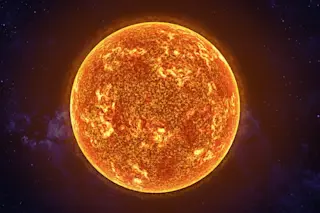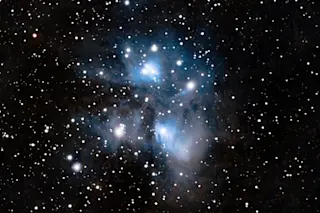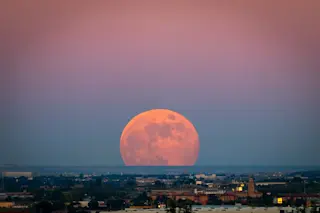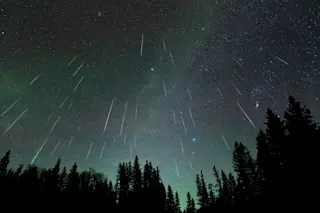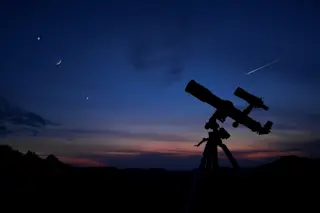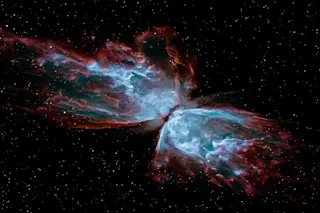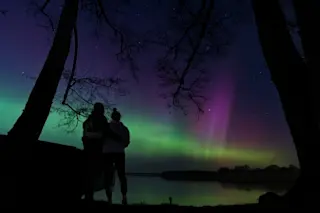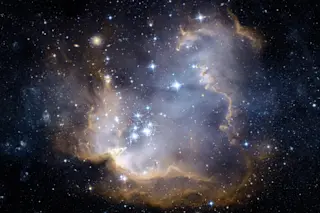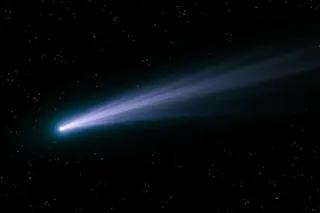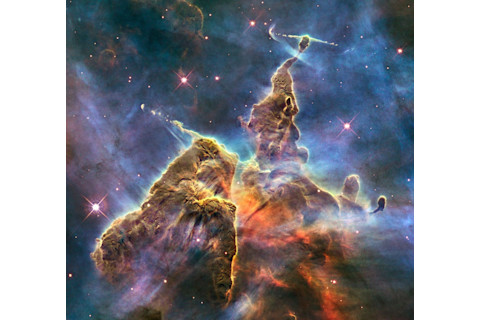
(Credit: NASA / ESA / SSI) One of the most massive star systems in our galaxy is giving astronomers clues toward how stars can disrupt new stellar formation. Newborn stars promptly start blasting away at the clouds of molecular gas that helped form them, and that destructive process has shaped the evolution of our galaxy. The findings, published in the Monthly Notices of the Royal Astronomical Society, took a look at the Carina nebula, an active star-forming region. Stars are born in clouds of gas and dust called nebulae. Where the material gets dense enough, it collapses under its own gravity until the pressure at its core is enough to kick off the nuclear reaction that powers a star. When a new star ignites, it pours out vast amounts of radiation so powerful that it strips electrons from atoms, leaving positive ions in its wake. That radiation whittles away thinner parts of the cloud, carving the cloud into long, narrow shapes that look like pillars. The process, called photo-evaporation, is also slowly destroying the pillars themselves. “In terms of physics, the ionizing radiation from the massive stars hits the surrounding cloud surfaces, heating the gas and ionizing the atoms. This will cause the gas to stream away from the pillar surface, therefore removing material from the clouds, which thus are depleted,” explained European Southern Observatory (ESO) astronomer Anna McLeod. In the meantime, of course, the destructive force of newly born stars may also be helping to drive creation of other stars, by pushing gas and dust into denser clumps. Those new stars, in turn, flare to life and begin destroying the clouds that spawned them. It’s a complex process of feedback, and thanks to new observations with the Very Large Telescope, astronomers now understand that process in greater detail.
The Pillars Are Shrinking
To gather the data, the astronomers pointed the four 8.2m main mirrors of ESO’s Very Large Telescope at the Carina Nebula, a cloud of gas and dust about 6,500 light years away. Visible from the southern hemisphere, Carina is one of the largest nebulae we can see from Earth, and it’s a massive hotbed of star formation. Using an instrument called the Multi-Unit Spectroscopic Explorer (MUSE), McLeod and her team at ESO were able to map the flow of ionized gas in and around six pillars of material in Carina. The tips of the pillars are catching the brunt of all that ionizing radiation; astronomers call this area an “ionization front,” and it’s where most of the action of photo-evaporation is happening. The cloud structure further back along the length of the pillar is denser and somewhat more protected from the onslaught. McLeod and her team determined how much ionizing radiation from nearby O-type and B-type stars is striking the tip of each of Carina’s pillars, and how quickly each pillar is losing material to that bombardment. They combined that data, from six pillars in different regions of the nebula, with older observations of three of the Eagle Nebula’s better-known “Pillars of Creation” and one pillar from NGC 3603, a nebula about 20,000 light years away. According to McLeod, it was important to compare pillars from these different nebulae in order to get a better understanding of how photo-evaporation works in general, not just how it works in a particular set of conditions. “These regions have different numbers of ionizing massive stars, different masses (in terms of gas and dust), and they are located in different environments in the Milky Way,” she said. By comparing all that data, the researchers found that how quickly pillars shrink depends very closely on how much ionizing radiation is blasting their tips.
The Evolution of Galaxies
That modelling is vital to understanding why our universe looks the way it does today. The way massive stars erode their home nebulae, clearing away the star-forming material in some regions of space and setting off new waves of star formation in others, plays a huge role in how galaxies evolve. “Galaxy evolution models can only reproduce the observed galaxy population if the effect of massive stars is included,” said McLeod. Without those destructive effects to evaporate nebulae, the models end up full of unrealistically dense galaxies that produce stars much more efficiently than any galaxy we see in the real universe. That’s because clearing away the molecular gas of the cloud takes away the material that might collapse and form a new star, so the destructive effects of newborn stars can, in some ways, limit star formation in their neighborhoods. Computer models of galaxy formation can help us understand how the Big Bang led to the universe we see today, and to make them more accurate, researchers need to plug in the right set of numbers to describe the effects of ionizing radiation from newborn massive stars. Now, McLeod and her colleagues have those numbers.
The Rest of the Puzzle
Getting really accurate models of galaxy evolution, however, will require answering a few more questions about how young, massive stars shape, and ultimately destroy, the nebulae that spawn them. Ionizing radiation is just one piece of the puzzle. “We also need to consider their strong stellar winds, supernova explosions when they exhaust their hydrogen reservoir, and bipolar jets when the massive stars are still very young and embedded in the clouds they formed from,” said McLeod. “We therefore need to understand these effects separately first, so that we can then put the pieces of the puzzle together.” Putting those pieces together will help astronomers make sense of why the universe looks the way it does, but getting the numbers will require more observations of distant star-forming regions like Carina. “We are working on it!” said McLeod.
This article originally appeared in Astronomy.com.


